Novelty Nation: A Brief (and quite informal) History of Comic Book Novelty Ads
Alas, those cool looking novelties in comic books of the Postwar Era – Whoopee Cushions, stink perfume, Joy Buzzers, trick gum, etc. – weren’t all they were cracked up to be
The Postwar Novelty Craze
If you were a little kid who loved comic books in the 1950s, 1960s and 1970s, you were most likely as drawn to the advertisements as you were the actual comics.
And nothing captured the imagination of youngsters quite like the novelty ads. You couldn’t miss them. Often, they’d take up an entire page with different sized colour halftone blocks showcasing the latest in exotic must-have gadgets and gag gifts extraordinaire.
And millions of children scraped together their allowances, busted open piggy banks, and dug spare change out from under couch cushions to be part of the growing nationwide obsession with mail-order novelties.
Oh, and the things you could buy . . .
A buck would get you X-Ray Spex, a 7-foot-tall Frankenstein’s monster, a bald-head wig, a miniature secret camera, a joy buzzer, a silent dog whistle, a trick baseball, stink perfume (that smells like a rotten egg), or a spud gun that shot pieces of potato across the room (at least . . . in theory).
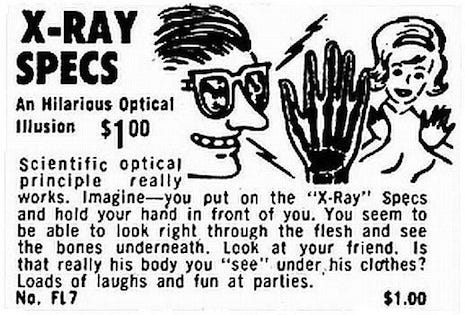
If you were willing to shell out a couple of quarters, you could buy a bar of trick soap that left inky blackness on some sap’s hands and face, or hot pepper gum that burned the chewer’s mouth, or snapping gum, which looked like a pack of gum, but was really a little mouse trap waiting to spring on the unsuspecting victim’s fingers.
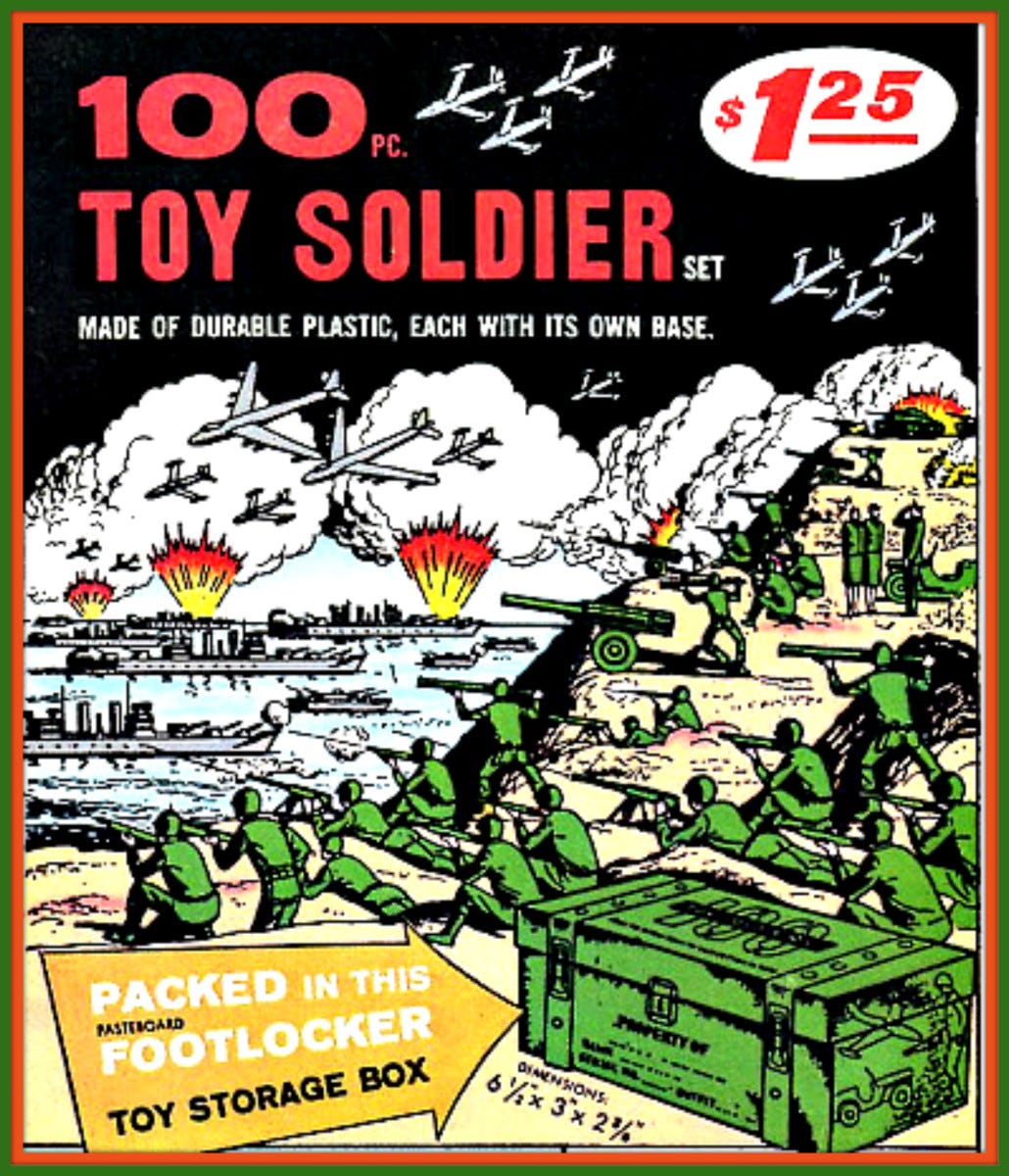
And a $1.25 would get you 100-Piece Toy Soldier Set, complete with its own footlocker storage box. And we’re not just talkin’ soldiers here, kiddies – we’re looking at Jeeps, battleships, tanks, cruisers, cannons, bombers, trucks and jet airplanes. You could start World War III in your backyard for a buck twenty-five! Other cool items that could be sent away for included cans of nuts with snakes that popped out, fake severed fingers, and a little spy scope that would give the dope who used it a black eye.
Some advertisements promised even more dubious offerings, like the ones for a “Darling Pet Monkey” for $18.95, from an outfit calling itself “ANIMAL FARM” in Miami Beach, Florida. The ads promised: “The Squirrel Monkey makes an adorable pet and companion. Almost human, with its warm eyes, your family will love it. These young monkeys grow about 12 inches high. Eats same as you, even likes lollipops. Simple to care for and train. Live delivery guaranteed.”
Guess what? Thousands of people across North America ordered those little Squirrel Monkeys in the mail. And when they arrived, in tiny makeshift cages, they’d either be nearly dead (or . . . actually dead), or wild with fear, lunging out of their confines, biting and scratching the recipients, running away, and true to their reputation as acrobats, leaping on pipes and light fixtures and other high places.
But there were stories circulating about Squirrel Monkeys that eventually got used to their surroundings – and the human beings that took care of them – and made good companions. As one Vermont homemaker told a local newspaper in February 1968: “It’s just like having another child – only more fun!”[1]

The Sordid Tale of Sea Monkeys
And then there were Sea Monkeys – those famous Sea Monkeys, who could forget them? – which sold for anywhere from a buck to a buck twenty-five – depending on where and when you sent off for them – and resembled a family of happy humanoid underwater beings. Dad. Mom. Brother. Sis. The only thing missing was a submarine with tailfins.
The ads said:
“Sea Monkeys eat very little, and they keep their water clean, they require only a minimum of care although they LOVE attention. Anyone enjoys the company of pets will adore Sea Monkeys. Best of all, we even show you how to teach them to obey your commands and do tricks, like a pack of friendly trained seals. What a way to surprise your friends!”
Sea Monkeys were introduced to the world by mail-order marketing pioneer Harold Von Braunhut (1926 – 2003), and who also happened to be a white supremacist (but that’s another story!). Although in development since the late 1950s, Sea Monkeys officially made their debut – under that cute and catchy name – in 1962, during the idealistic reign of President John F. Kennedy. The idea is that you’d mix together a special powdered mix with a dry brine shrimp-based product in water, and see the tiny little creatures come to life before your very eyes.
Just add a droplet (or two) of Liquid Plasma, and you’re all set! As Von Braunhut later told an interviewer: “People say, ‘What gave you the idea for Sea-Monkeys?’ I thought, if you could take a package of powder and put it in water and see it come to life . . . What could be more remarkable than that?”[2]
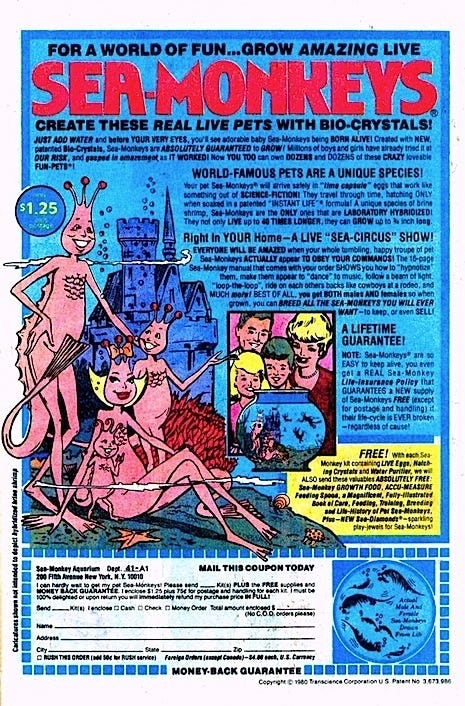
And since brine shrimp were so robust – I mean, they’re the only aquatic creature than can survive in the briny depths of the Great Salt Lake in Utah – you could count on hours of fun and games from these little characters. The advertisements promised: “Sea Monkeys, a laboratory-developed variety of Artemia Salina are in fact SO EASY to raise, even a six-year-old child can do so without help.”
But not everybody found the sea monkeys amazing. One disgruntled 11-year-old remarked: “Kids shouldn’t buy Sea Monkeys. Unless they are prepared to accept the fact that pictures they see in the ads are just come-ons.”[3]
Feeding the addiction: The S.S. Adams Company
Novelties, gag gifts and other assorted mail-order oddities had all proven to be profitable throughout the 20th Century. There was big money to be had in this line of work, especially in those prosperous Postwar years. Leading the charge was the S.S. Adams Company, which billed itself as the “world’s largest manufacturer of practical jokes and magic tricks since 1906.”
S.S. Adams specialized in sneezing powder, Joy Buzzers, squirting nickels, cans of jumping snakes, leaking water glasses, exploding cigars, cigarette lighters that squirted water, disappearing ink, phony vomit, fake bugs, and nearly every other obnoxious trick you could possibly conceive of.
S.S. Adams did gangbusters business year-round, especially in March, with the approach of April Fool’s Day. Company founder Sam Adams’ son, Joseph H. Adams, told an interviewer: “Even in the 1930s, when the country was in the Great Depression, people would always find a dime or a few pennies to spend on novelties. You really can’t put a price on a sense of humor.”[4]
But Sam Adams did not always make good judgments when it came to novelties and gag gifts. For example, when representatives of a Canadian rubber company approached him with a device called a Whoopee Cushion.
The premise: You blow into the tube of a little balloon-like bag, fill it full of air, and place it on a chair or a couch or wherever some unsuspecting sucker is about to park her or his derriere. The target sits down and out comes an explosive fart-like sound, and with it, loads of belly laughs and surprised guffaws.
Sam Adams balked at the idea. He thought it too crude. Feared it’d gross people out, and upset prudish adults. The legendary novelty magnate told Scribner’s Magazine in 1940: “I passed it up, and the first year, I threw away $50,000.”[5]
The Whoopee Cushion was such a runaway success that S.S. Adams released its own knockoff, the Razzberry Cushion. Park it under someone’s behind and watch all hell break loose! While it never reached the same heights of success or pop culture glory as the virtually identical Whoopee Cushion . . . well, you’ve got to hand it to Sam Adams for giving it the old college try.

The Sad Truth About Mail-Order Novelties
Aside from the Whoopee Cushion, the grim reality about most of these novelty items for sale in comic books is that they were always infinitely cooler in the imagination than they were in real life.
In fact, once they arrived in the mail, they often proved to be a major disappointment. Little hunks of junk that usually ended up in the landfill.
Still, there was something undeniably thrilling about saving one’s allowance, stuffing it into an envelope with mail order form that was impossibly tiny to fill out, and sending it off to one of these mail-order novelty companies, and waiting for the shipment to arrive. Most of these ads indicated “NO C.O.D.s,” which meant Cash on Delivery.
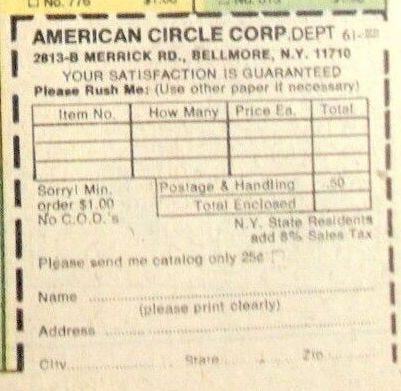
So, you had to have your hard-won shekels ready to go when you sent off your order.
Many of the comic book novelty advertisements came from the curiously named Honor House Products (not exactly a good fit for crude prank gifts), a mail-order outfit located in a town called Lynbrook on Long Island, New York. Turns out Honor House was a giant warehouse with its own mailing center.
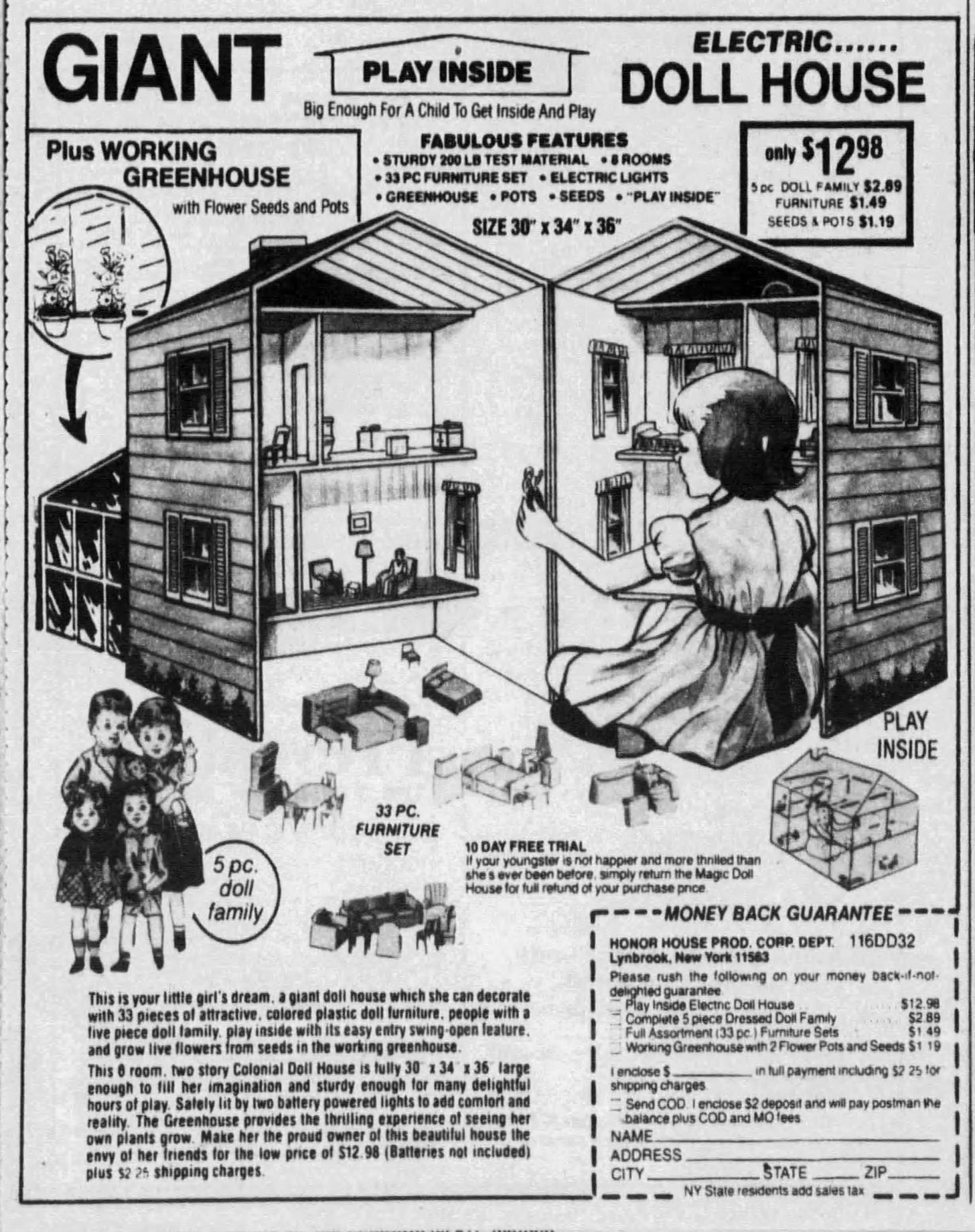
In addition to novelty items and gag gifts, HONOR HOUSE specialized in such products as the Tummy Trim Girdle (only $4.95 – unless you were size 36 to 44, in which case it was $5.95) and the Giant Play-Inside Electric Doll House (only $7.98 – and the ads boasted: “Big enough for a child to get inside and play!”). For an extra 78 cents, you could buy a 5-piece doll family with that doll house, and an extra dollar would get you a 33-piece furniture set.
Oh, and they also sold a porcelain clown doll with a tear painted on its cheek that looked like it was straight out of a horror movie. Unleash the lifelong therapy sessions!
But I digress. The main purpose of Honor House Products was to function as a clearing house for novelties. Businessman Edwin Wegman founded Honor House in 1951. At first, the mail-order company specialized in inexpensive items from what was then known as the Far East, or what we now call Asia.
Before long, Honor House specialized in mail-order novelties, and took out full-page advertisements in comic books. As Edwin Wegman’s son, Thomas, later explained: “I don’t think he ever made a ton of money out of the mail order. It was a business, but it wasn’t a multi-million-dollar thing.”[6]
Honor House employees would slash open thousands of envelopes that arrived in the mail, count out the change, and process orders. This essentially meant hoofing down the warehouse aisles in pursuit of the novelties that children ordered (many of which were made by the S.S. Adams Company), sealing them in a box, filling out an address label, affixing postage, and sending it off to its destination.
And if you were a youngster expecting that package – waiting patiently, day after day . . . in certain cases, week after week – when it finally arrived on your doorstep, that was a day worthy of celebration.
But what happened when the BIG DAY finally arrived?
In the summer of 1974, Harry Haigley, an investigative reporter with the Miami News in Miami, Florida, decided to find out the answer to that question. Thumbing through a Dennis the Menace comic book, he found a full-page advertisement for a novelty company that called itself the American Circle Corporation in Bellmore, New York, full of those delightful little illustrations and vivid descriptions of each item.
In consultation with a group of children from the nearby Small Fry Day Care Center, Haigley ordered more than 20 toys that appeared on the advertisement.
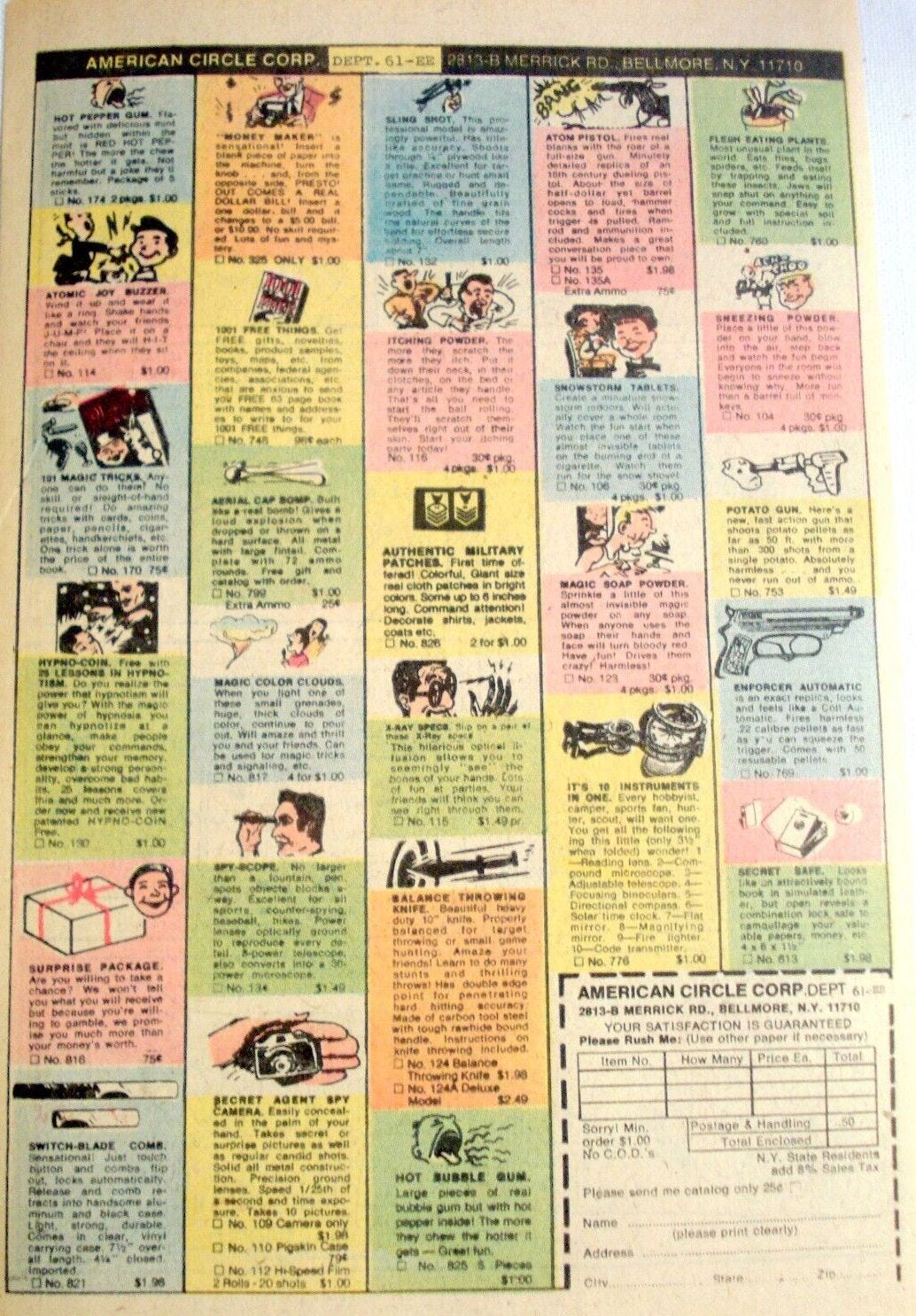
Among the big shipment were booklets on hypnotism and ventriloquism, as well as a silent dog whistle, a money maker, a so-called “hot seat” (described in the ad as the “funniest gag ever, like a miniature electric chair”), an atomic joy buzzer, itching powder, a potato gun, trick soap, sneezing powder, and a toy pistol that “looks and feels like a Colt Automatic,” and multiple other items.
When the package arrived at the Miami News building in early August, Haigley promptly took it to the day care centre to determine the reaction of the children whose input he sought in ordering the items. Two of the things that Haigley ordered didn’t come, but there were plenty of other items in the small parcel.
And . . . it turns out . . . nearly everything sucked. The booklets on hypnotism and ventriloquism contained microscopic print and proved to be hopelessly short. The children gave failing grades to an exploding grenade and a toy gun that was supposed to be super realistic.
The only thing that got glowing reviews was the Joy Buzzer, which – in the words of Haigley, “worked very well (much to the delight of the adult reporters in The News office).”
“In general, the children were disappointed. They said the toys did not live up to the promises in the ads,” Haigley wrote.[7]
Haigley called the comic book company responsible for Dennis the Menace, Fawcett Inc. in New York City, to inquire about these novelty advertisements. A sales rep at Fawcett in charge of comic book ads told him: “No one really reads the ads before they go into print. I guess it would be my responsibility to read the ads, but no one ever told me about it. I never thought about it.”[8]
When asked about the shoddy quality of the products offered through his mail-order company, Larry Praeger, president of the American Circle Corporation, responded: “They are impulse purchase items. For $1, how can a kid go wrong? If you read the ads literally, it might not be exactly what it says. It’s all in fun.”
It’s all in fun.
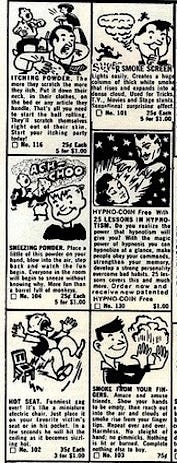
Unless . . . you’re some poor kid from Davenport, Iowa, or the Bronx, New York, or Tuscaloosa, Alabama, or Provo, Utah, or Moose Jaw, Saskatchewan.
Eagerly anticipated parcels contained Spy Cameras that didn’t take pictures, Squirting Pens that dripped instead of squirted, Trick Soap that your siblings wouldn’t use because it bore no resemblance to the bars of soap they normally used, X-Ray Specs that made everything look gauzy, and Sneezing Powder that would get you beaten up at school if you unleashed it too aggressively.
Visions of gag gifts galore dissolved into wasted allowances. Money earned from mowing lawns and pulling weeds and other back-breaking work, could never be gotten back. Impulse items on the slippery slide into oblivion. The Joke’s on the Joker.
Ironically, the real winners in this sordid tale were the kids who got their kicks from the novelty advertisements in comic books, but never ordered anything. They avoided the disillusionment that came with the realization that fake vomit wasn’t going to fool anyone, Joy Buzzers refused to stay put in the palm of your hand and didn’t give anybody a shock, and the so-called Silent Dog Whistle emitted a squeal that was so high-pitched . . . that not even your dog could hear it.
NOTES
[1] Bennington Banner, February 17, 1968, 5.
[2] The Baltimore Sun, July 21, 1997, 5D.
[3] The Times Herald (Port Huron, MI), August 29, 1982, 59.
[4] Asbury Park Press, April 1, 1981, 27.
[5] “From Gags to Riches,” The Readers Digest, March 31, 1941, 33.
[6] (Source: Reed Tucker, “Amazing! Hypnotic! Order Now!,” New York Post, Oct. 2, 2011, URL: https://nypost.com/2011/10/02/amazing-hypnotic-order-now/
[7] The Miami News, August 10, 1974, 1, 15.
[8] The Miami News, August 10, 1974, 1, 15.







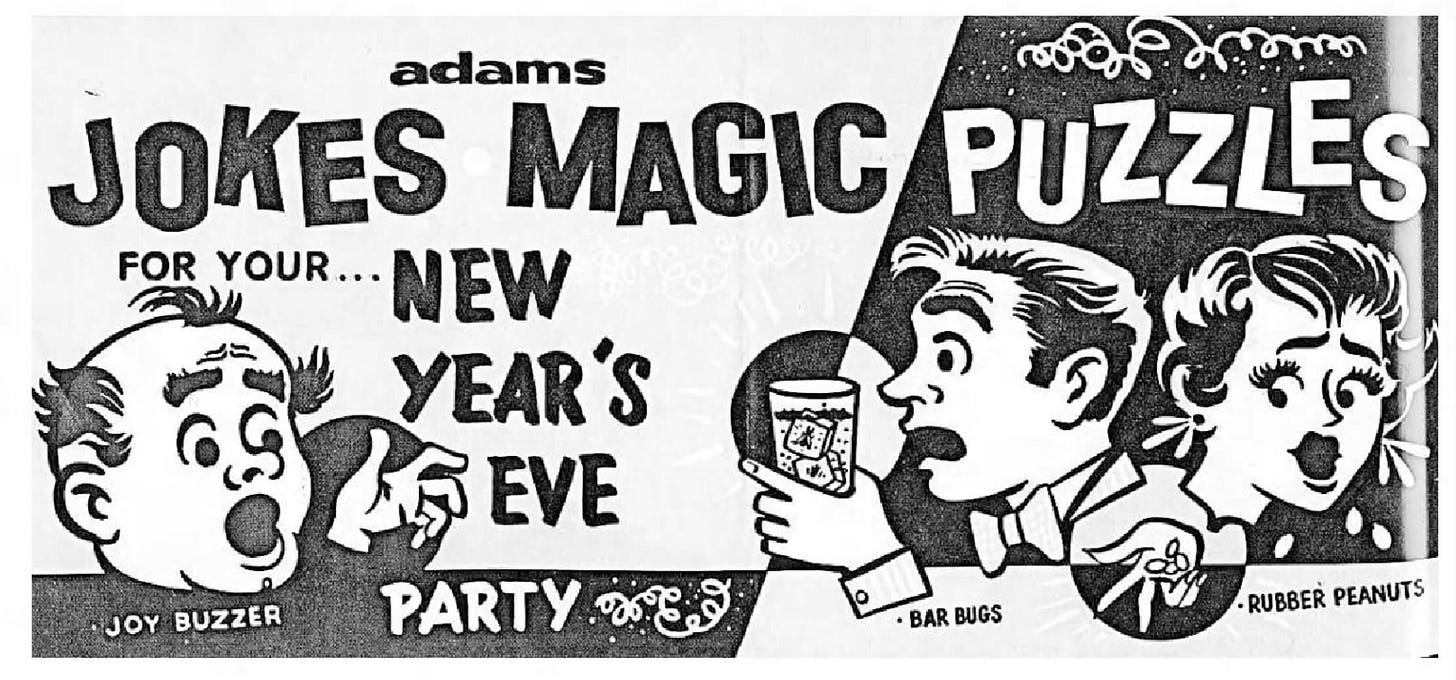
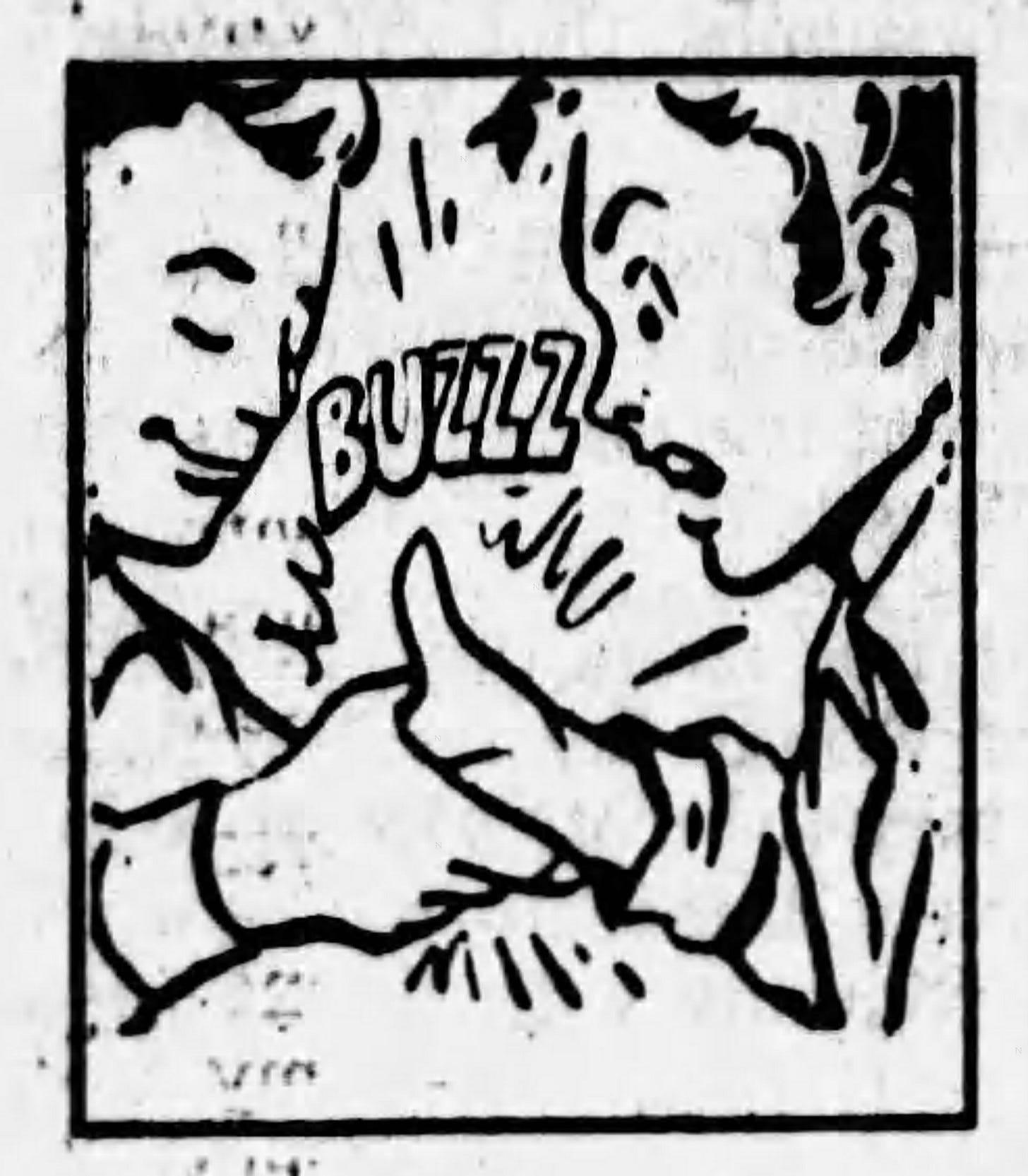

I was that kid from Provo, Utah still waiting for my Capt. Marvel Decoder ring .. maybe Amazon has one??
What memories! I ordered the Sea Monkeys, and really wanted that giant doll-house. Thanks for the stories behind the memories, so very interesting.